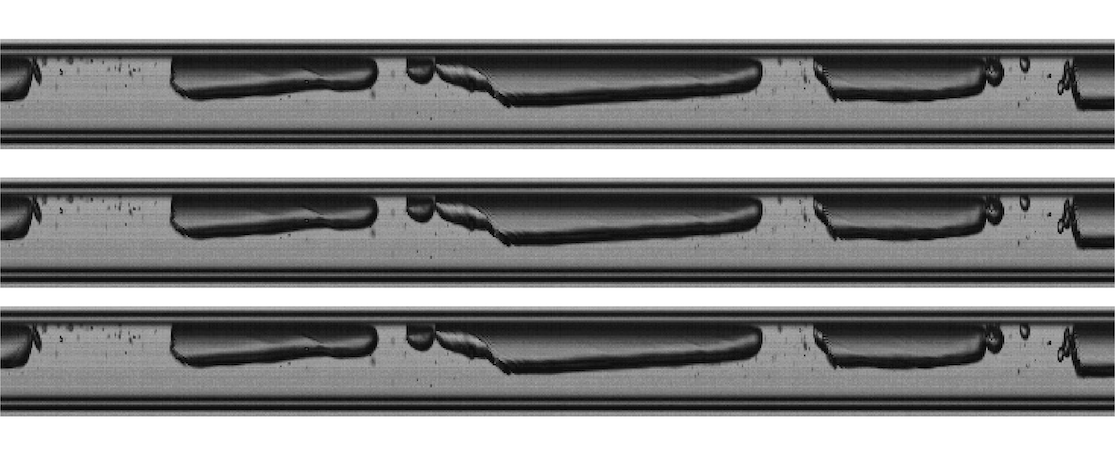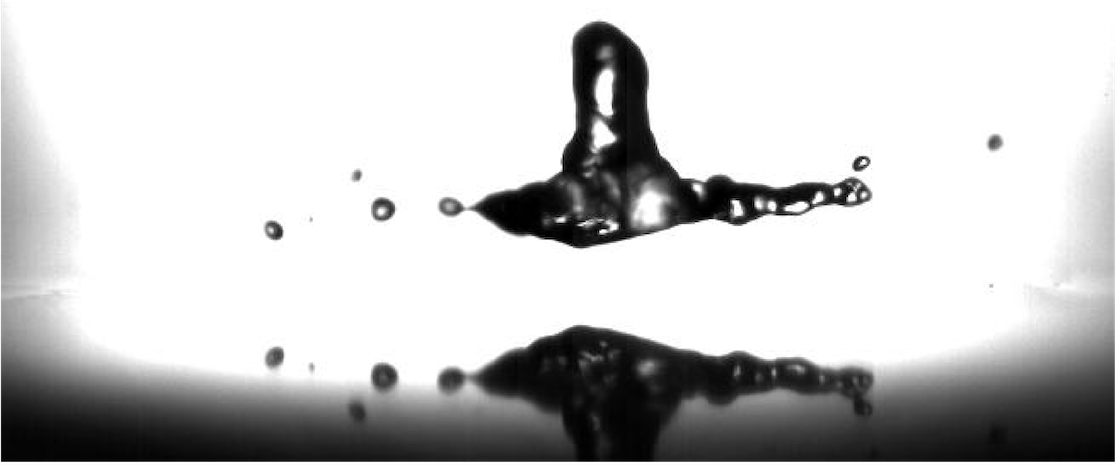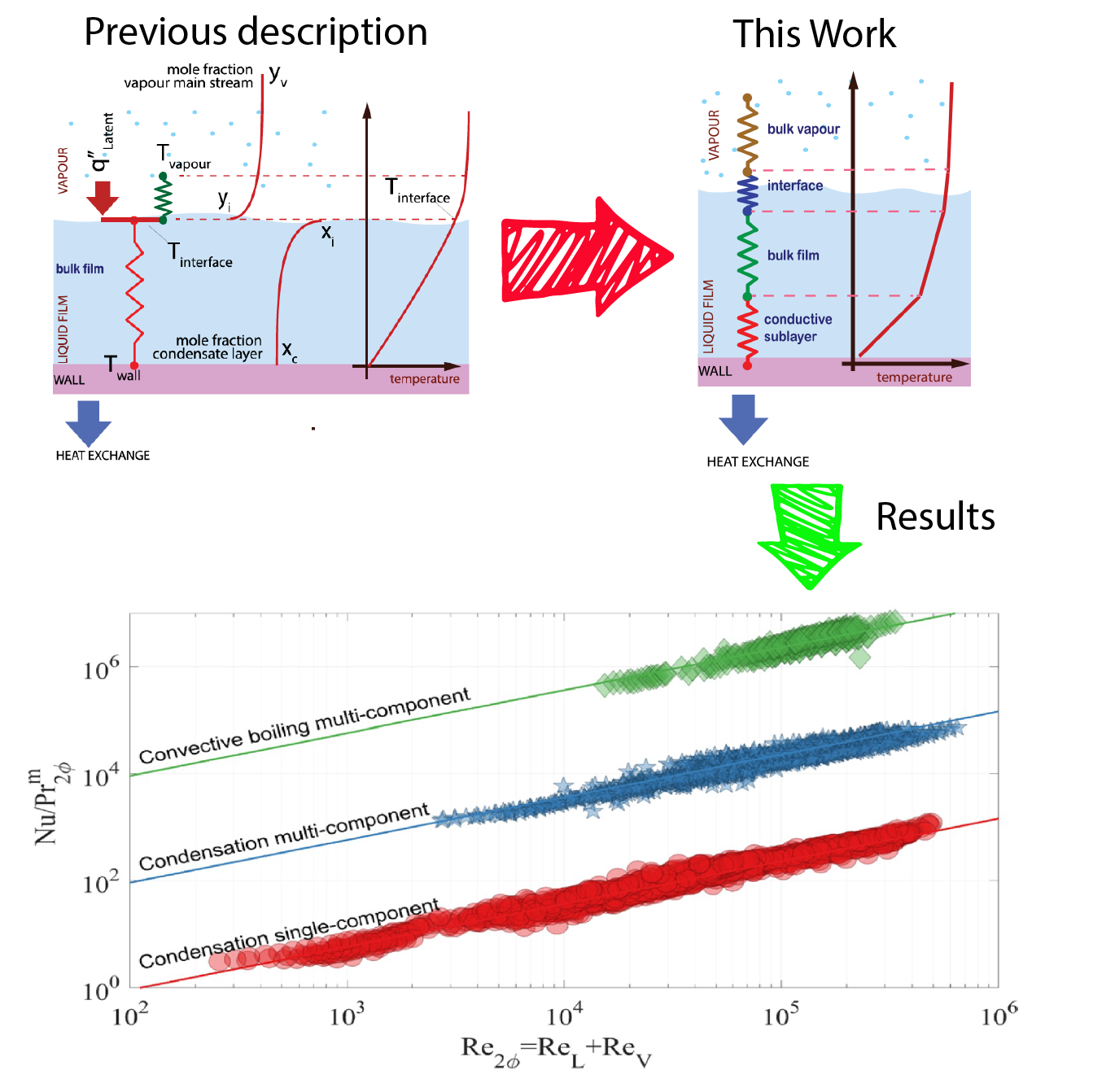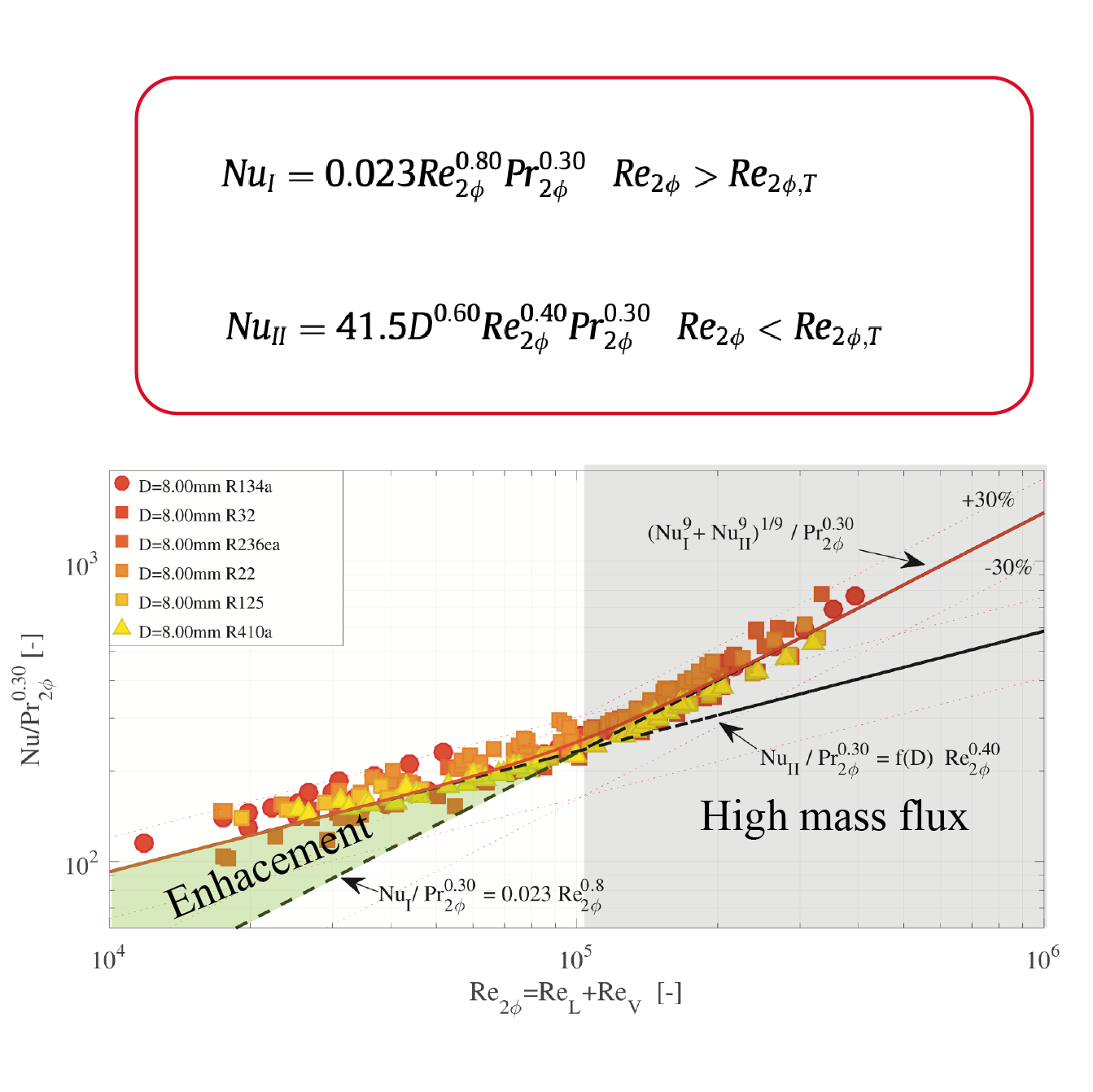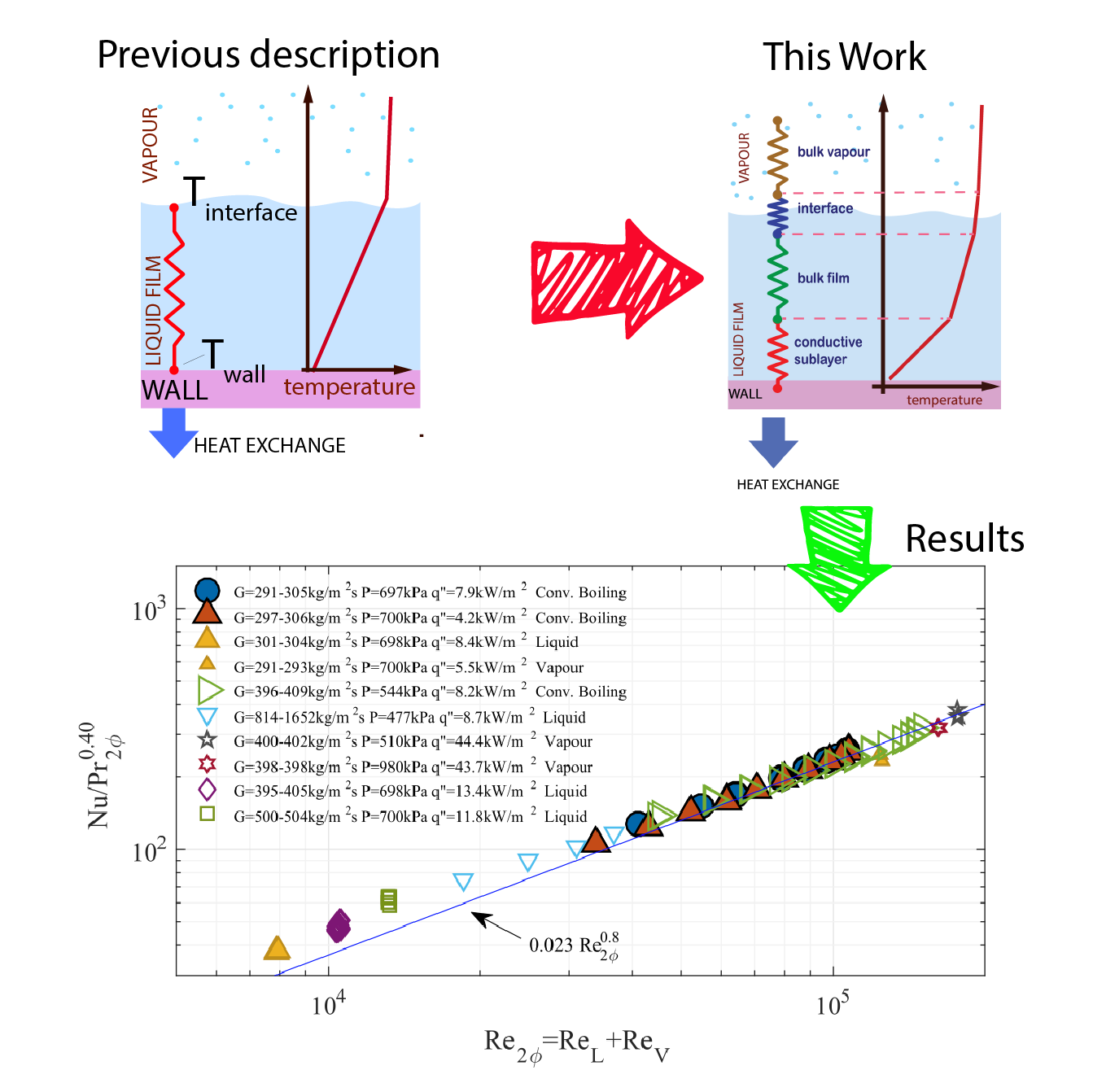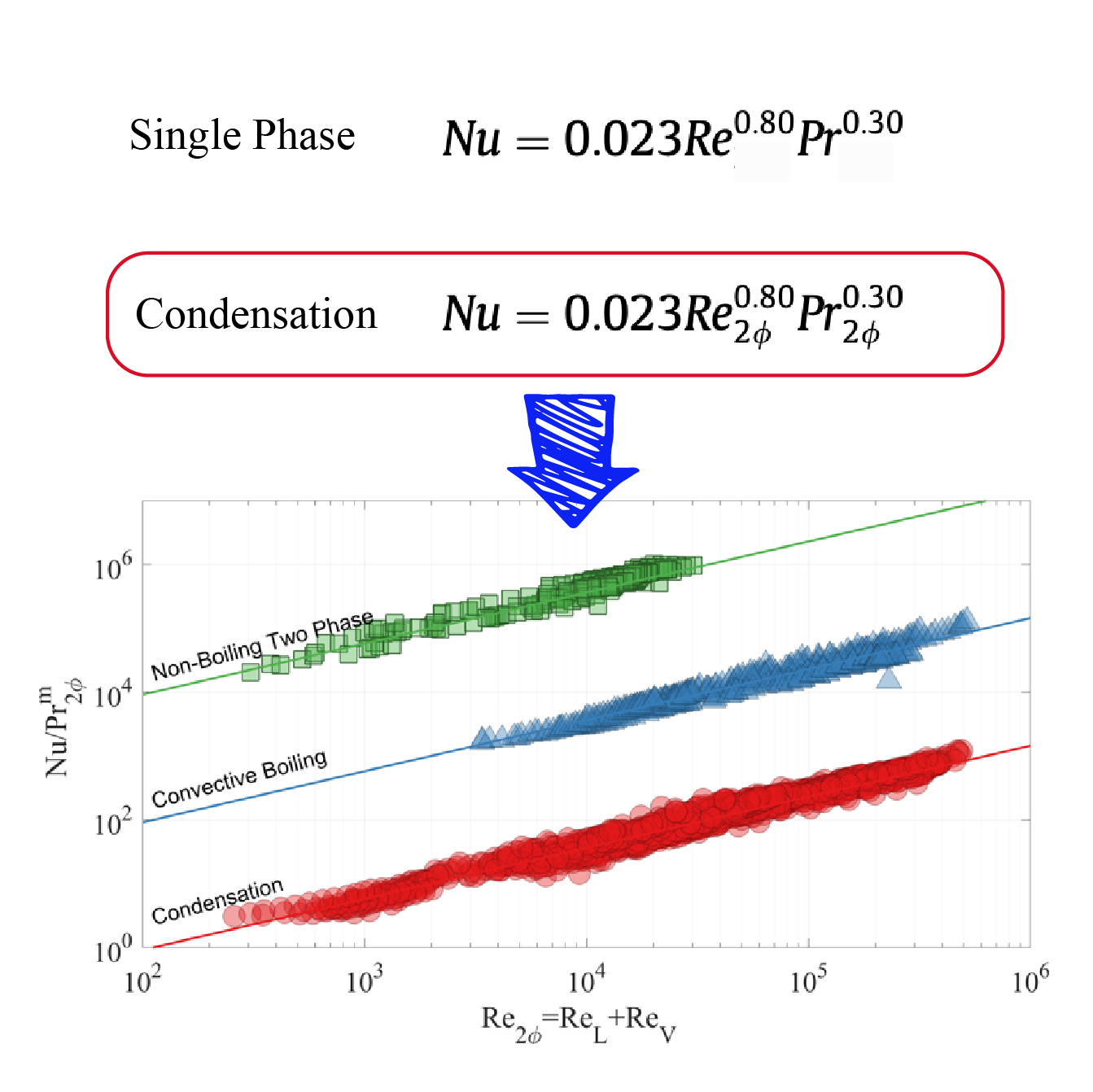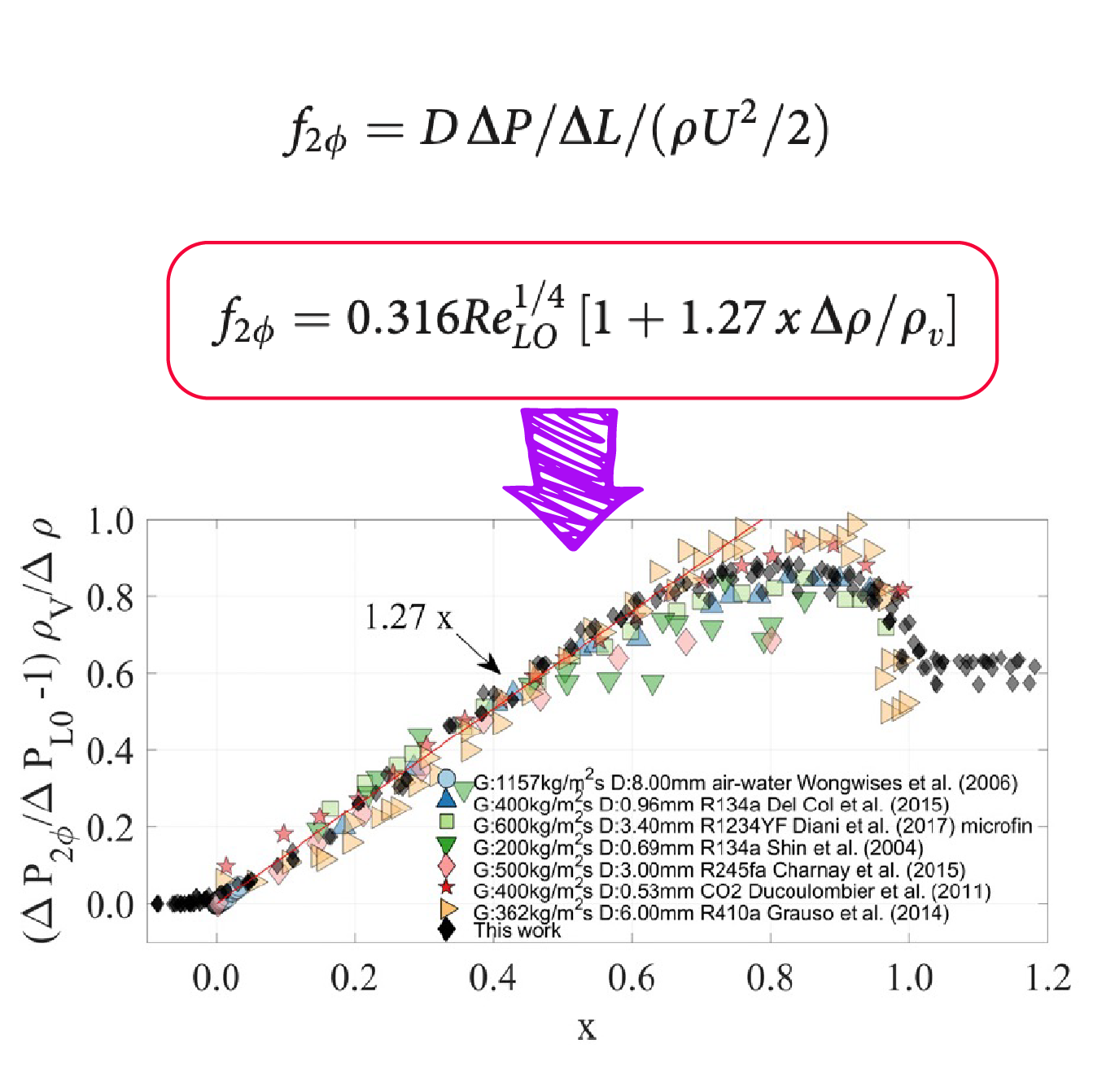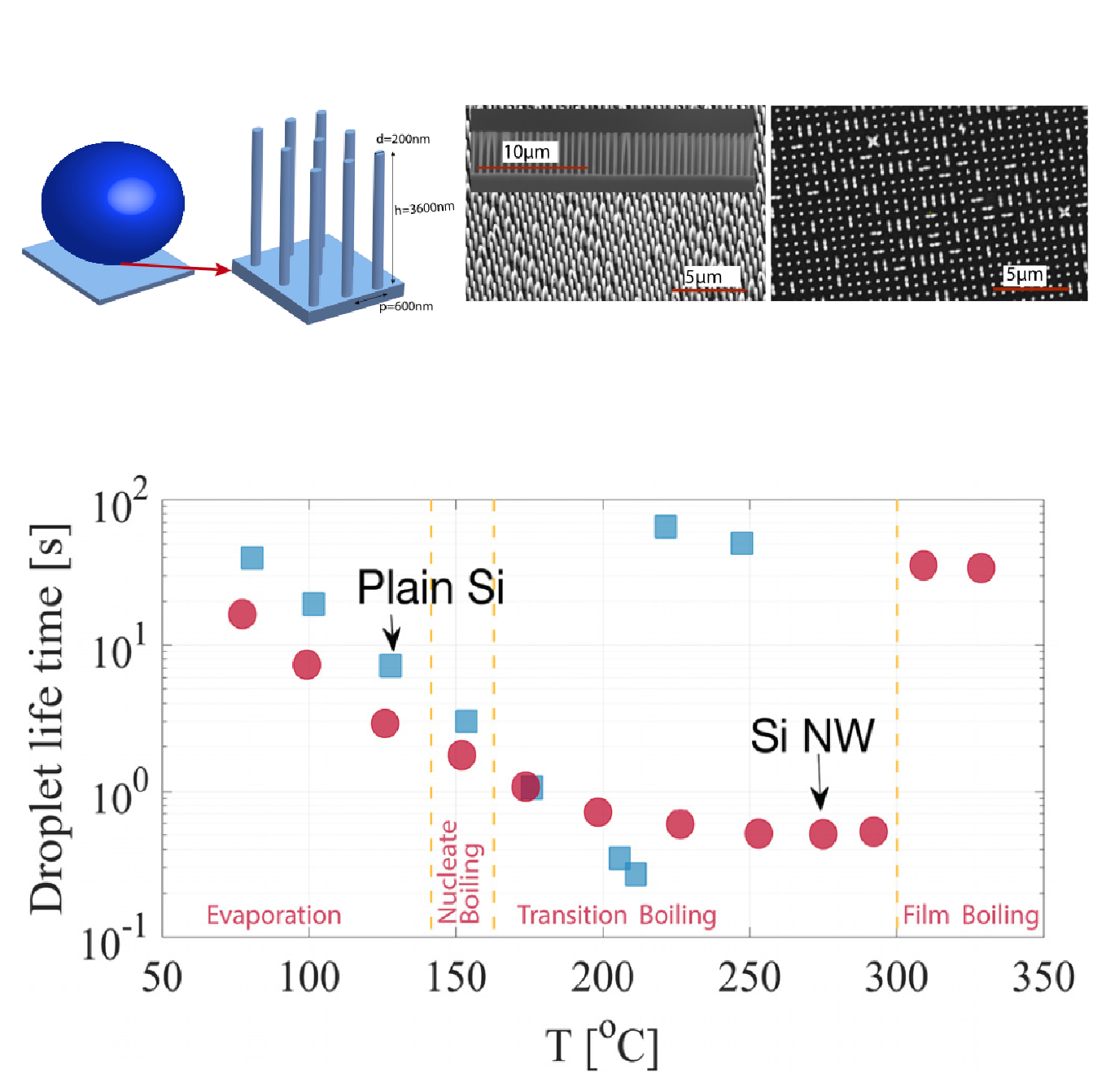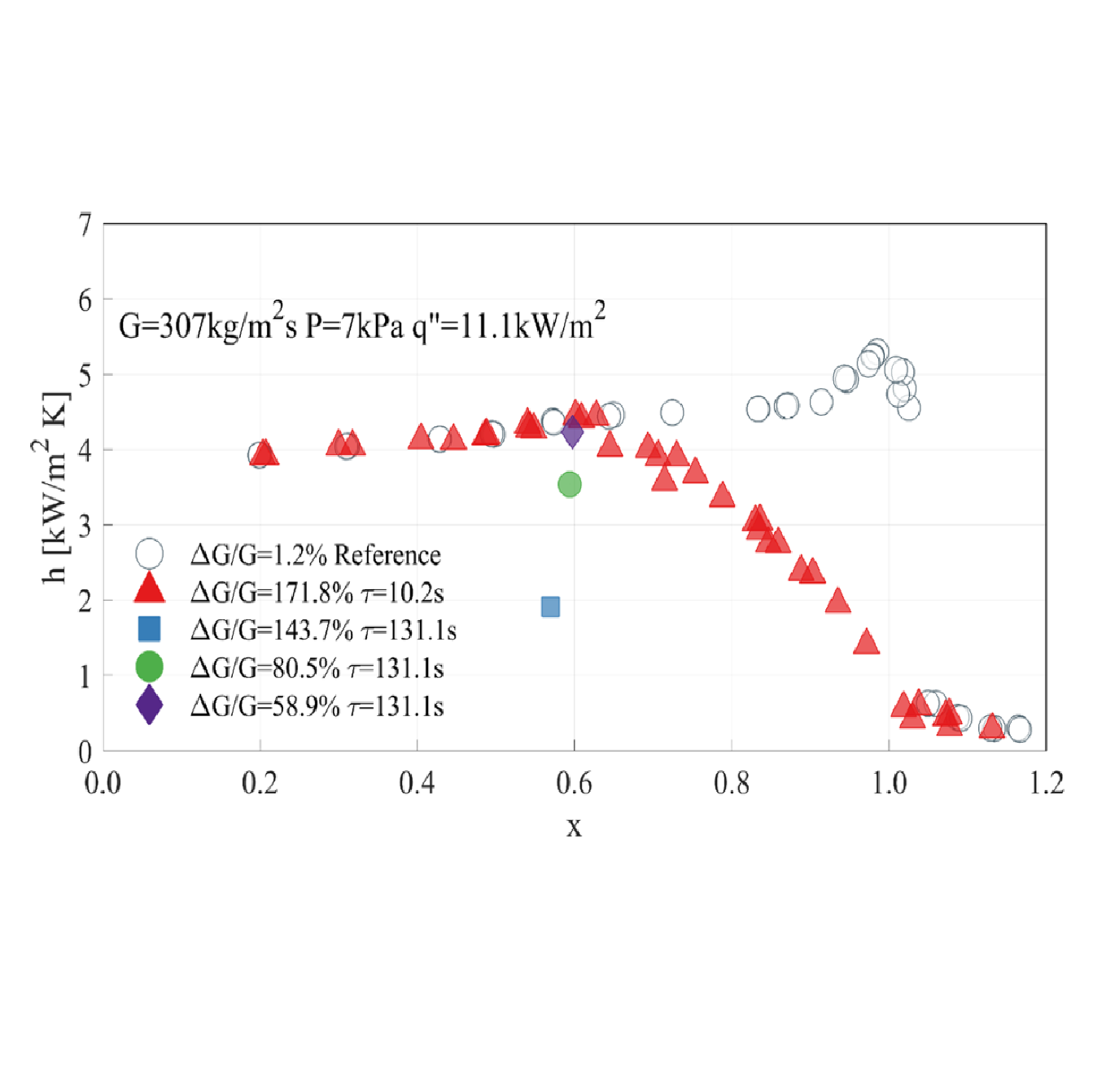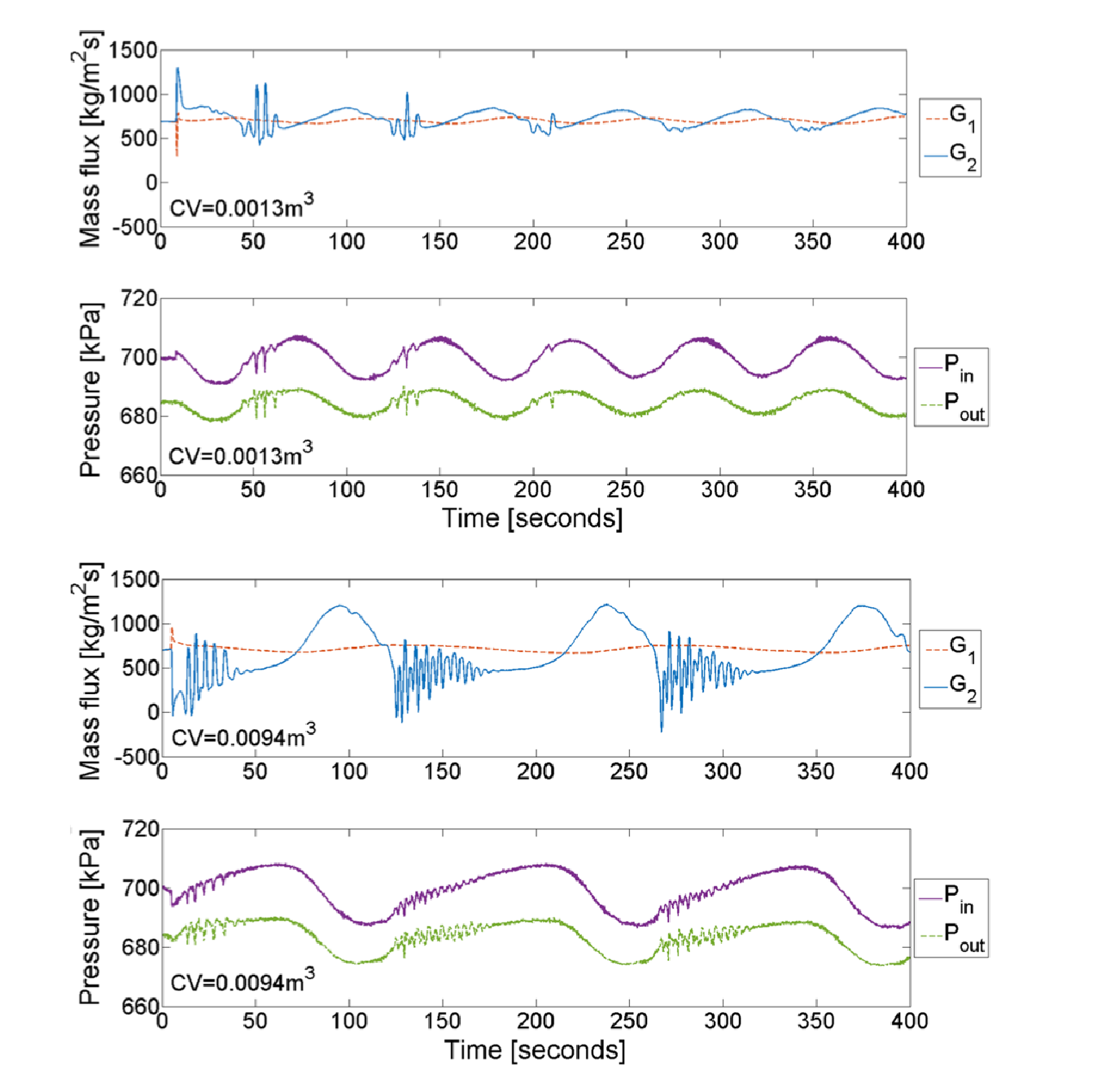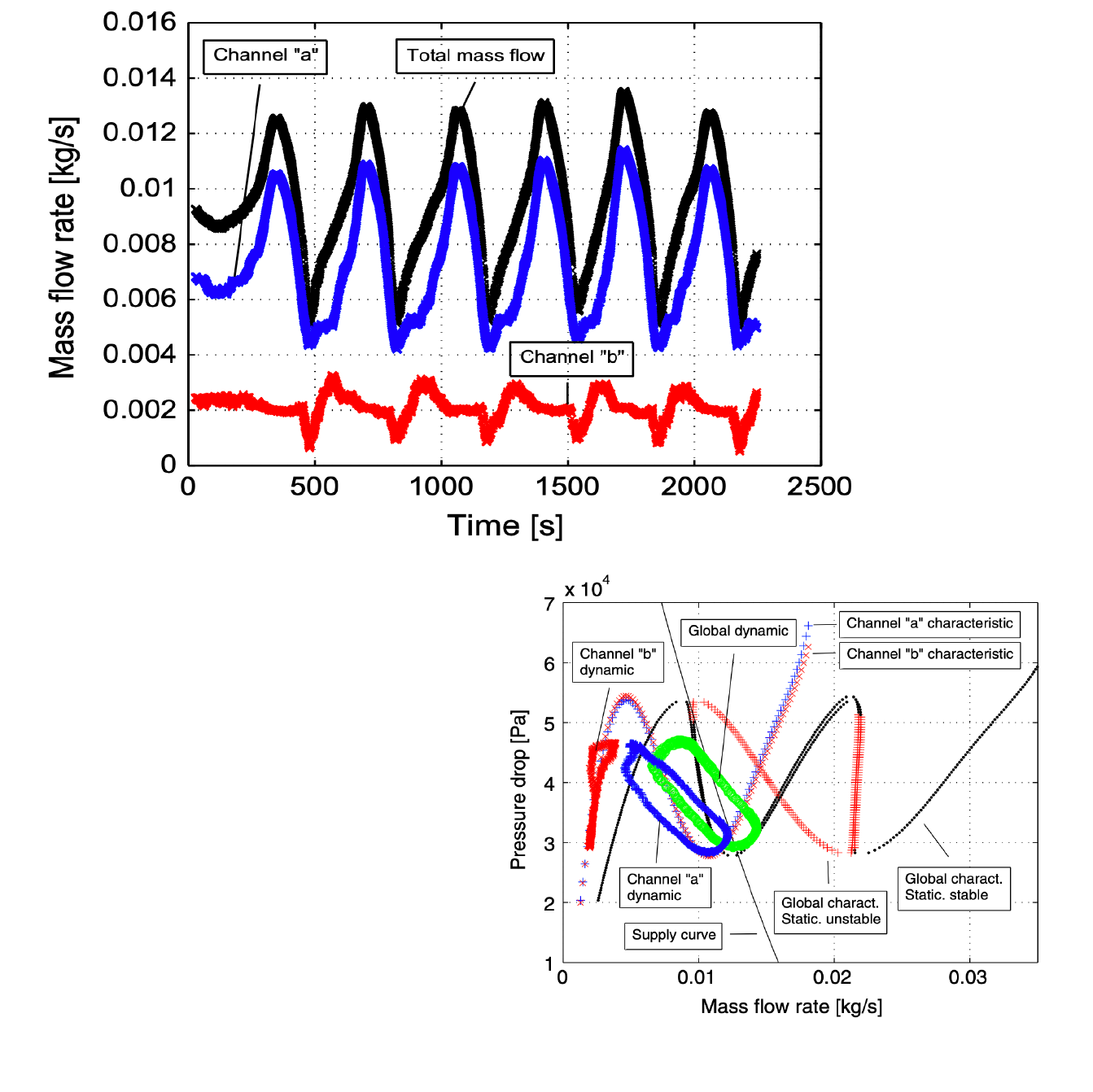Dorao, C.A. Fernandino, M. (2024) Experimental investigation of flow boiling regimes in a horizontal heated pipe. 14th International Topical Meeting on Nuclear Reactor Thermal-Hydraulics, Operation, and Safety, August 24-28, Vancouver, Canada
Yasim, M.A., Dorao, C.A. Fernandino, M. (2024) Experimental study of the effect of the heating profile on the characteristics of the geysering instability. 14th International Topical Meeting on Nuclear Reactor Thermal-Hydraulics, Operation, and Safety, August 24-28, Vancouver, Canada
Paul, S., Paul, S., Fernandino, M., Dorao, C.A. (2021) Reconsidering the influence of the mass flux during nucleate flow boiling in a horizontal heated pipe. AIP Advances 11(12)
S Paul, M Fernandino, CA Dorao (2021) On the scaling of convective boiling heat transfer coefficient, International Journal of Heat and Mass Transfer 164, 120589
S Paul, S Paul, M Fernandino, CA Dorao (2019) Does the Criteria of Instability Thresholds During Density Wave Oscillations Need to Be Redefined? Proceedings of the 7th International Conference on Advances in Energy Research, December 10 -12, Mumbai, India.
S Paul, S Paul, M Fernandino, CA Dorao (2020) The overlooked role of pressure oscillations on heat transfer deterioration during self-sustained flow oscillations. Applied Physics Letters 117 (25)
CA Dorao, J Ryu, M Fernandino (2019) Law of resistance in two-phase flows inside pipes. Applied Physics Letters 114 (17)
IW Park, J Ryu, M Fernandino, CA Dorao (2018) Can flow oscillations during flow boiling deteriorate the heat transfer coefficient? Applied Physics Letters 113 (15)
Park, IL W, Fernandino M., Dorao C.A. (2018) Studies on Two-phase Flow Instability and Heat Transfer under Oscillatory Flow, Transactions of the Korean Nuclear Society Autumn Meeting Yeosu, Korea, October 25-26
IW Park, M Fernandino, CA Dorao (2018) On the occurrence of superimposed density wave oscillations on pressure drop oscillations and the influence of a compressible volume. AIP Advances 8 (7)
IW Park, M Fernandino, CA Dorao (2018) Experimental study on the characteristics of pressure drop oscillations and their interaction with short-period oscillation in a horizontal tube. International Journal of Refrigeration 91, 246-253
CA Dorao, M Fernandino (2018) Simple and general correlation for heat transfer during flow condensation inside plain pipes. International Journal of Heat and Mass Transfer 122, 290-305
CA Dorao, S Drewes, M Fernandino (2018) Can the heat transfer coefficients for single-phase flow and for convective flow boiling be equivalent? Applied Physics Letters 112 (6)
M Fernandino, CA Dorao (2017) Density Wave and Pressure Drop Oscillations in horizontal mini-channels –experimental and numerical results. Research Workshop on
Validation of Thermal Models for Military Power Systems. 9-10 October,
Utrecht, The Netherlands
CA Dorao, T Langeland, M Fernandino (2017) Effect of heating profile on the characteristics of pressure drop oscillations. Chemical Engineering Science 158, 453-461
C.A. Dorao (2015) Effect of inlet pressure and temperature on density wave oscillations in a horizontal channel. Chemical Engineering Science 134, 767-773
M Sørum, CA Dorao (2015) Experimental study of the heat transfer coefficient deterioration during density wave oscillations. Chemical Engineering Science 132, 178-185
E Manavela Chiapero, M Fernandino, CA Dorao (2015) Effect of the Mass Flow Rate and the Subcooling Temperature on Pressure Drop Oscillations in a Horizontal Pipe. 24th International Conference Nuclear Energy for the New Europe , September 14-17 Portoroz, Slovenia.
E Manavela Chiapero, M Fernandino, CA Dorao (2014). Experimental study of pressure drop oscillations in parallel horizontal channels. International Journal of heat and fluid flow 50, 126-133
C. A. Dorao; L. Ugueto; E. Manavela Chiapero; M. Fernandino (2013) Experimental study of density wave oscillations in horizontal straight tube evaporator. Procedeing 8TH INTERNATIONAL SYMPOSIUM ON MEASUREMENT TECHNIQUES FOR MULTIPHASE FLOWS 13–15 December 2013 Guangzhou, P.R. China, in AIP Conf. Proc. 1592, 198–204 (2014)
E Manavela Chiapero, D Doder, M Fernandino, CA Dorao (2014) Experimental thermal and fluid science 52, 318-327
E Manavela Chiapero, M Fernandino, CA Dorao (2013) Numerical analysis of pressure drop oscillations in parallel channels. International journal of multiphase flow 56, 15-24
E Manavela Chiapero, M Fernandino, CA Dorao (2012) On the influence of heat flux updating during pressure drop oscillations–A numerical analysis International Journal of Heat and Mass Transfer 63, 31-40
E Manavela Chiapero, M Fernandino, CA Dorao (2012) Study of the influence of axial conduction in a boiling heated pipe. Chemical Engineering Research and Design 90(9) 1141-1150
E Manavela Chiapero, M Fernandino, CA Dorao (2012) Review on pressure drop oscillations in boiling systems. Nuclear engineering and design 250, 436-447
Ruspini L.C. , Dorao C., Fernandino M. (2012) Two-phase flow instabilities in boiling and condensing systems. Journal of Power and Energy Systems 6(2) 302-313
E Manavela Chiapero, M Fernandino, CA Dorao (2011) Mal-distribution phenomena induced by multiple solutions in parallel channels heat exchangers. NURETH-14: 14. International Topical Meeting on Nuclear Reactor Thermalhydraulics, Toronto, Ontario (Canada), 25-30 Sep 2011
L Ruspini, C Dorao, M Fernandino (2011) Modeling of dynamic instabilities in boiling systems. Proceedings of 19th International Conference On Nuclear Engineering, ICONE19, Japan
L.C. Ruspini, C.A. Dorao, M. Fernandino (2011) Study of density wave phenomena in boiling and condensing two-phase flow systems. 14. International Topical Meeting on Nuclear Reactor Thermalhydraulics, Toronto, Ontario (Canada), 25-30 Sep 2011.
LC Ruspini, C A Dorao, M Fernandino (2011) Simulation of a natural circulation loop using a least squares hp-adaptive solver. Mathematics and Computers in Simulation 81(11) 2517-2528
E. M. Chiapero, M. Fernandino, C. A. Dorao (2011) Numerical study of pressure drop oscillations in parallel channels. ASME-JSME-KSME 2011 Joint Fluids Engineering Conference (44403) 2613-2621
J. C. Pacio, C. A. Dorao (2011) Modelling Two-Phase Heat Exchanger Performance in the Annular-Mist Flow Regime Considering Entrainment and Deposition Phenomena. In Proceedings of ASME-JSME-KSME Joint Fluids Engineering Conference 2011
E Manavela Chiapero, M Fernandino, CA Dorao (2011) Parametric study of the pressure characteristic curve in a boiling channel. Computational Thermal Sciences: An International Journal 3(2)
J. C. Pacio, C. A. Dorao (2011) Design considerations for the sizing of high-effectiveness two-phase flow heat exchangers. 23 rd IIR International Congress of Refrigeration
J,C, Pacio, C.A. Dorao (2010) A homogenization approach for studying two phase heat exchanger performance. In Proceedings of the 8 th International Topical Meeting on Nuclear Thermal-Hydraulics, Operation and Safety.
J.C. Pacio, C. A Dorao (2010) A study of the effect of flow maldistribution on heat transfer performance in evaporators. Nuclear Engineering and Design 240(11) 3868-3877
JC Pacio, CA Dorao, M Fernandino (2010) Sensitivity Analysis of Heat Exchangers Using Perturbative Methods. Spectral and High Order Methods for Partial Differential Equations: Selected papers from the ICOSAHOM'09 conference, June 22-26, Trondheim, Norway
JC Pacio, CA Dorao (2010). Numerical Analysis of the Effect of Two-Phase Flow Maldistribution on Heat Transfer Performance. Transactions of the American Nuclear Society 102 599-600
C.A. Dorao, (2009). Simulation of thermal disturbances with finite wave speeds using a high order method. Journal of Computational and Applied Mathematics 23. 637–647
